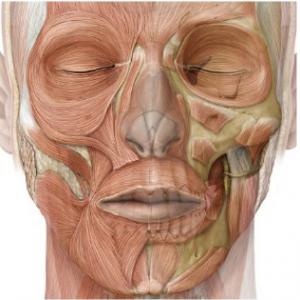
Orofacial Myofunctional Therapy is the treatment of Orofacial Myofunctional Disorders. These disorders range from postural and functional disorders, including sucking habits in children, inappropriate oral postures, breathing patters such as mouth breathing, and dysfunctions involving the muscles of the tongue, lips, jaw, and face that can occur in both children and adults.
In the realm of Dental Sleep Medicine, Orofacial Myofunctional Therapy is used to help patients achieve nasal breathing, a habitual closed-mouth posture, and improvement in the muscle tone and function of the tongue, lips, soft palate, respiratory, orofacial, and craniofacial muscles. Nasal breathing, lip seal, and muscle toning exercises help decrease sleep-disordered breathing events and can help patients achieve higher quality sleep. Orofacial Myofunctional Therapy can be effective at reducing sleep-apnea-related breathing events, but it can be challenging as it requires daily exercises and neuromuscular re-patterning of various unconscious behaviors, such as mouth breathing. It does not offer a cure for every patient, but for many it is an effective and minimally invasive adjunctive treatment.
At San Francisco Dental Sleep Medicine, we combine Orofacial Myofunctional Therapy approaches with our Oral Appliance Therapy to help our patients achieve maximum clinical success. We also offer Orofacial Myofunctional Therapy as an adjunctive approach for patients being treated with CPAP.
Our main goal with Orofacial Myofunctional Therapy is to help our patients achieve normal nasal breathing during the day and while sleeping, and also to strengthen the muscle tone and function of the lips, tongue, soft palate, respiratory, orofacial, and craniofacial muscles. The specific exercises are customized to each patient’s needs.
Orofacial Myofunctional Therapy is a tested and proven adjunctive treatment. An excellent research project in the form of a meta-analysis was published recently in the Journal of SLEEP, Vol. 38, No. 5, 2015. The article concluded with the following statement: “Current literature demonstrates that myofunctional therapy decreases AHI by approximately 50 percent in adults and 62 percent in children. Lowest oxygen saturation, snoring, and sleepiness outcomes improve in adults. Myofunctional therapy could serve as an adjunct to other obstructive sleep apnea treatments.”
Contact us if you have any questions or would like to schedule a consultation with Dr. Chenin.
Date: 04/07/2016